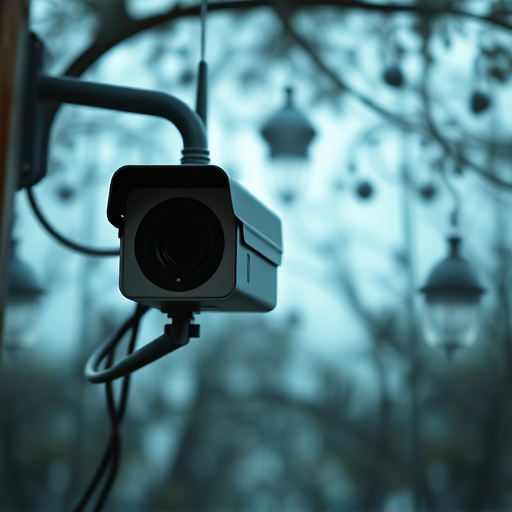Hidden cameras, or nanny cams, use radio frequency (RF) technology for wireless video and audio transmission, posing a potential privacy risk. To avoid them in your home, be vigilant in areas with clear lines of sight and frequent visitor traffic. Implement Nanny Cam Placement Tips by thinking like a thief to identify optimal hidden camera spots. Advanced RF detection techniques using specialized equipment are crucial for locating covert surveillance devices. A systematic multi-directional scan, understanding unique camera bands, shielding measures, and recognizing RF limitations help protect your privacy in the home.
Uncover the unseen with our comprehensive guide on detecting hidden cameras using radio frequency (RF) technology. Learn how RF signals power many stealthy devices, like nanny cams, and understand the vital role they play in modern surveillance. Discover expert tips on identifying potential nanny cam placement spots in your home and explore advanced techniques for detecting RF signals. Equip yourself with the best practices and tools to ensure privacy and security in your personal space.
- Understanding Radio Frequency (RF) Technology in Hidden Cameras
- Identifying Potential Nanny Cam Placement Spots in Your Home
- Advanced Techniques for Detecting RF Signals: Tools and Best Practices
Understanding Radio Frequency (RF) Technology in Hidden Cameras
Hidden cameras, often referred to as nanny cams, have become a common tool for home security and surveillance. These devices operate using radio frequency (RF) technology, enabling them to transmit video and audio signals wirelessly to a receiver or recording device. Understanding RF technology is crucial when it comes to detecting hidden cameras in your home.
RF signals can be transmitted over long distances, making them ideal for covert surveillance. Nanny cams typically use low-frequency radio waves that are not easily detected by conventional means. They operate within the ISM (Industrial, Scientific, and Medical) band, which is unregulated and widely available for such devices. This makes it important to be aware of potential hidden camera placements, especially in areas where there’s frequent visitor traffic or spaces that offer line-of-sight views, as these are prime locations for RF signals to be transmitted and received.
Identifying Potential Nanny Cam Placement Spots in Your Home
When it comes to identifying potential nanny cam placement spots in your home, it’s essential to think like a thief. Hidden cameras are often placed in areas that offer optimal visibility while remaining concealed. Common locations include near windows, behind mirrors, inside bookshelves, under furniture, and along baseboards. Keep an eye out for these spots, as they can be ideal hiding places for malicious devices.
Consider the layout of your home and think about the lines of sight from common gathering areas like living rooms or kitchens. Additionally, pay attention to any potential blind spots that could provide cover for a hidden camera. By understanding where a camera might go unnoticed, you can proactively secure your space and protect your privacy.
Advanced Techniques for Detecting RF Signals: Tools and Best Practices
In the quest to uncover hidden cameras, especially in domestic settings, advanced techniques employing radio frequency (RF) detection have emerged as powerful tools. These methods go beyond traditional visual inspections and rely on specialized equipment to identify and locate RF signals emitted by covert surveillance devices like nanny cams. By understanding the unique signatures of various camera types, experts can employ direction finding techniques using RF analyzers or spectrum analyzers to pinpoint the source of the signal, revealing hidden cameras placed in strategic locations around the home—from corners to behind furniture or within everyday objects.
Best practices dictate a systematic approach when utilizing these advanced techniques. Scanning in multiple directions and frequencies allows for comprehensive coverage. It’s crucial to know that different camera models operate on distinct bands, so identifying these bands is key to successful detection. Additionally, employing shielding measures and understanding the limitations of RF signals can enhance the precision of the process. Nanny cam placement tips often involve hiding cameras in plain sight or using innocent-looking objects as decoys, making advanced RF detection a critical component for those seeking to ensure privacy within their homes.
When it comes to protecting your home, being aware of potential nanny cam placement spots and employing advanced techniques to detect RF signals are crucial steps. By understanding radio frequency technology and staying vigilant, you can ensure a safer environment for your family. Remember, these Nanny Cam Placement Tips can significantly enhance your privacy and security measures in the digital age.
